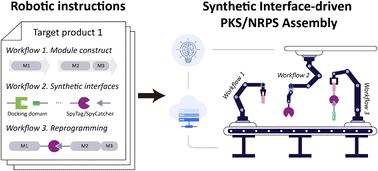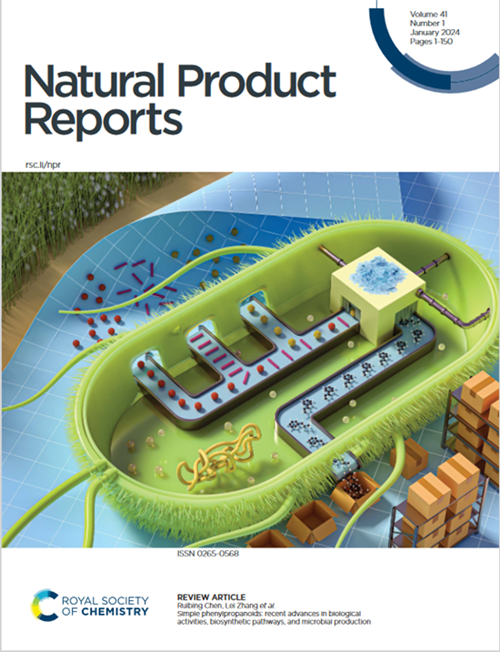Engineering modular enzyme assembly: synthetic interface strategies for natural products biosynthesis applications
IF 10.6
1区 化学
Q1 BIOCHEMISTRY & MOLECULAR BIOLOGY
引用次数: 0
Abstract
Covering: 2020 to 2025
Natural products remain indispensable sources of therapeutic and bioactive compounds, yet traditional discovery strategies are constrained by compound rediscovery. Modular biosynthetic enzymes, such as type I polyketide synthases (PKSs) and type A non-ribosomal peptide synthetases (NRPSs), offer promising platforms for combinatorial biosynthesis owing to their programmable architectures. However, practical implementation is frequently limited by inter-modular incompatibility and domain-specific interactions. This review highlights recent advances in modular enzyme assembly enabled by synthetic interfaces-including cognate docking domains, synthetic coiled-coils, SpyTag/SpyCatcher, and split inteins-which function as orthogonal, standardized connectors to facilitate post-translational complex formation. These interfaces support rational investigations into substrate specificity, module compatibility, and pathway derivatization as well as general enzyme clustering applications beyond PKS and NRPS systems. Synthetic interfaces can be integrated with computational tools to support a more systematic and scalable framework for modular enzyme engineering by providing predictive insights into domain compatibility and interface design. These approaches within iterative design-build-test-learn workflows can accelerate the programmable assembly of biosynthetic systems and expand the accessible chemical space for natural products.

工程模块化酶组装:天然产物生物合成应用的合成界面策略。
涵盖:2020年至2025年天然产物仍然是治疗性和生物活性化合物不可或缺的来源,但传统的发现策略受到化合物再发现的限制。模块化生物合成酶,如I型聚酮合成酶(pks)和A型非核糖体肽合成酶(NRPSs),由于其可编程的结构,为组合生物合成提供了有前途的平台。然而,实际实现经常受到模块间不兼容性和特定于领域的交互的限制。本文重点介绍了通过合成界面实现模块化酶组装的最新进展,包括同源对接域、合成线圈、SpyTag/SpyCatcher和分裂intin,它们作为正交的标准化连接器,促进翻译后复合物的形成。这些接口支持对底物特异性、模块兼容性和途径衍生化以及PKS和NRPS系统之外的一般酶聚类应用的合理研究。合成接口可以与计算工具集成,通过提供对域兼容性和接口设计的预测性见解,为模块化酶工程提供更系统化和可扩展的框架。这些迭代设计-构建-测试-学习工作流程中的方法可以加速生物合成系统的可编程组装,并扩大天然产品的可访问化学空间。
本文章由计算机程序翻译,如有差异,请以英文原文为准。
求助全文
约1分钟内获得全文
求助全文
来源期刊

Natural Product Reports
化学-生化与分子生物学
CiteScore
21.20
自引率
3.40%
发文量
127
审稿时长
1.7 months
期刊介绍:
Natural Product Reports (NPR) serves as a pivotal critical review journal propelling advancements in all facets of natural products research, encompassing isolation, structural and stereochemical determination, biosynthesis, biological activity, and synthesis.
With a broad scope, NPR extends its influence into the wider bioinorganic, bioorganic, and chemical biology communities. Covering areas such as enzymology, nucleic acids, genetics, chemical ecology, carbohydrates, primary and secondary metabolism, and analytical techniques, the journal provides insightful articles focusing on key developments shaping the field, rather than offering exhaustive overviews of all results.
NPR encourages authors to infuse their perspectives on developments, trends, and future directions, fostering a dynamic exchange of ideas within the natural products research community.
 求助内容:
求助内容: 应助结果提醒方式:
应助结果提醒方式:


